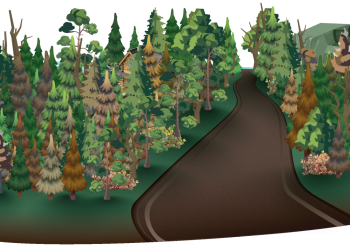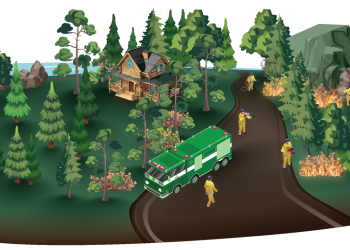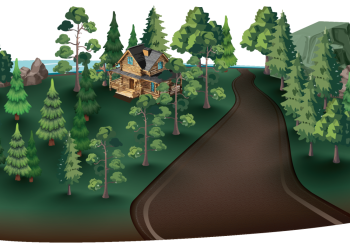Prevention
Areas of the forest in Minnesota's Arrowhead are high priorities to reduce the risk of catastrophic wildfire.
Past forest management, insect infestations, wind events, and climate change have resulted in an increase of flammable materials, referred to as “hazardous fuels.” The Forest Service, partners, and our communities are collaborating on forest stewardship practices to become more resilient to wildfires and improve forest health.
Fire Prevention
Firefighters count on you to do your part to reduce the risk of wildfires.
YOU can make all the difference in reducing the risk of unwanted wildland fires!
- It may be as simple as NOT lighting that campfire when conditions are dry and windy,
- or NOT throwing your cigarette butt out the car window,
- or NOT leaving a pile of burning trash unattended.
- Pay attention to current camp fire or brush burning restrictions.
Find Out More at Smokey Bears Website
The following outline steps to reduce hazardous fuels in our forests.
Planning and Funding

Identify land ownership, determine fuels reduction needs, and assess risks. Collaborate with land managers and land owners to pursue funding opportunities and achieve shared goals.
One method is Community Wildfire Protection Plans. These plans help to reduce wildland fire risks across larger areas in a shorter amount of time by prioritizing and coordinating efforts across jurisdictions.
Hazardous Fuels Reduction

Remove suppressed or sick trees and reduce tree density. Timber sales, mulching, and pile burning are forest management tools to create desired forest conditions.
Prescribed Fire

Reintroduce fire with planning and favorable conditions to increase diversity, improve habitats for plants and wildlife, combat invasive species, and reduce the threat of catastrophic wildfire.
Good Forest Management

Benefits include improved water quality and wildlife habitat, increased forest diversity and productivity, soil stabilization, and a reduction in invasive species.
Returning Fire to the Forest
Our forests are fire dependent and need periodic low intensity fire to reduce the risk of catastrophic wildfire and promote a balanced ecosystem. Prescribed fire is an important part of forest management and a beneficial means of achieving cross-cultural stewardship objectives.
Learn About Confronting the Wildfire Crisis
Growing wildfire risk is due to accumulating fuels, a warming climate, and expanding development into forested areas. To learn more about the efforts to protect people and communities while improving forest health and resilience visit the Wildfire Crisis Strategy
FireWise Communities
If you are a property-owner, there are several steps you can take to reduce fire risks.
Thousands of communities are located in fire-prone areas. Residents must take action to adapt their communities to fire. These actions will help to reduce risks to their homes and improve the safety of the public and firefighters.
It is the responsibility of property owners to clear brush, trees and other flammable material away from your house BEFORE a wildfire occurs.
The Forest Service partners with several other agencies to promote the FireWise Program which teaches property owners how to be proactive about reducing potential losses in wildfire-prone areas. For more information, see National Fire Protection Association - FireWise Website or FireWise in Minnesota.



